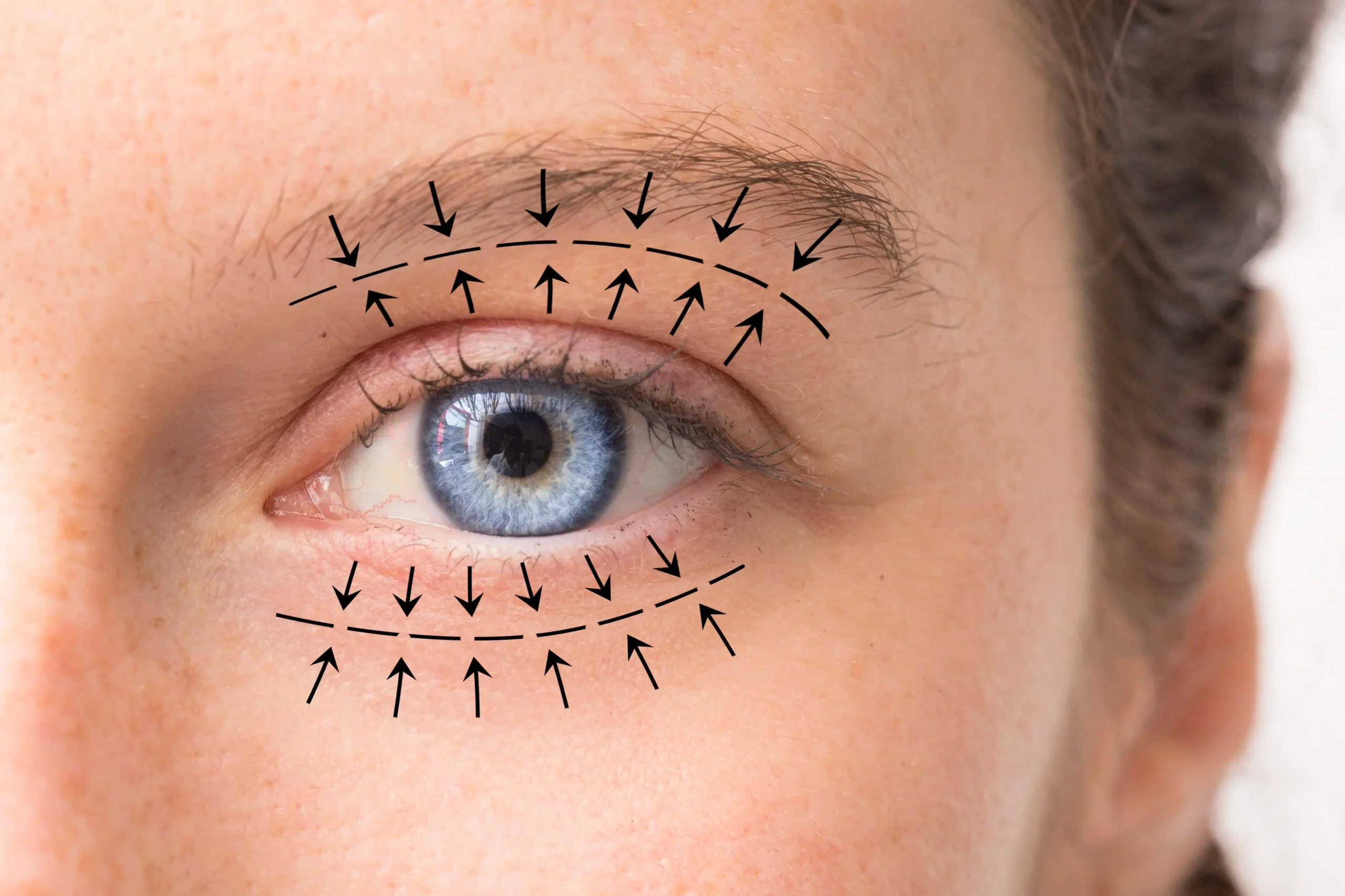
Blepharoplasty, also known as eyelid aesthetics or eyelid surgery, is a cosmetic surgical procedure that removes excess skin, fat, and muscle from the upper and/or lower eyelids. It rejuvenates the eye area by correcting droopy eyelids, under-eye bags, and tired or aged expressions—resulting in a more youthful, refreshed, and alert appearance.
This procedure may also improve vision in cases where sagging upper eyelid skin obstructs the visual field.
To remove sagging or loose skin on the upper eyelids
To reduce puffiness or “bags” under the eyes
To improve facial symmetry and eyelid definition
To correct vision obstruction caused by excess eyelid skin
To achieve a more rested, youthful, and open appearance
To feel more confident in photos and social interactions
You may be a good candidate for blepharoplasty if you:
Are over 18 years old (most commonly 30+)
Have droopy upper eyelids, under-eye bags, or excess eyelid skin
Are in good health and do not smoke
Have realistic expectations
Do not have uncontrolled eye diseases (e.g., glaucoma, dry eye syndrome)
Reduces under-eye bags, puffiness, and fine wrinkles
May involve fat repositioning, fat removal, and skin tightening
Can be performed through an internal (transconjunctival) or external incision
For full rejuvenation of the eye area
Often combined with brow lift or mid-face lift in comprehensive facial procedures
Typically done under local anesthesia (sometimes with sedation)
Duration: 1 to 2 hours, depending on the areas treated
Small incisions are made in natural eyelid creases or inside the lower lid
Excess tissue is removed or repositioned, and incisions are closed with fine sutures
Minimal visible scarring with proper healing
Swelling and bruising peak in 2–3 days, improving significantly within 7–10 days
Sutures are usually removed after 5–7 days
Light activities can resume in 2–3 days, while full recovery may take 2–3 weeks
Results are seen after swelling fully subsides in 4–6 weeks
Use of cool compresses, eye drops, head elevation, and sun protection is recommended
One
Local anesthesia
Immediately
7 days
None
* For informational purposes only, be sure to consult your doctor for diagnosis and treatment.
You’ll still look like yourself—just fresher and more awake. The goal is to restore a youthful eye contour, not alter your identity.
No. Incisions are placed in natural eyelid folds or inside the lower lid (for transconjunctival surgery). Scars typically fade and become invisible over time.
Blepharoplasty results are long-lasting—often 10 years or more. The aging process continues, but the improvements remain visible.
There is usually very mild discomfort after surgery, easily managed with pain relievers. Most patients describe a sensation of tightness or pressure rather than pain.
Yes, upper eyelid blepharoplasty can improve peripheral vision when excess skin droops into the visual field.
Absolutely. Many men undergo eyelid surgery to look more rested and alert without altering masculine features. The approach is tailored to preserve a natural male aesthetic.
Most patients are between 30–65, but it depends on your anatomy. If drooping or puffiness appears early, blepharoplasty can be considered younger.
Avoid makeup and contact lenses for 7–10 days post-surgery, or until your surgeon gives clearance.
Yes. Common combinations include brow lift, facelift, almond eye surgery, and Botox for full upper-face rejuvenation.
Blepharoplasty can be performed on just one eye if needed, for symmetry and balance.

Medipol University Hospital, being the justifiably proud of Medipol Education and Health Group in Turkey and in the world, resulting in this spirit, is a health complex having JCI standards accepting patients from all over the world.
TEM Avrupa otoyolu göztepe çıkışı no:1, 34214 Bağcılar/İstanbul